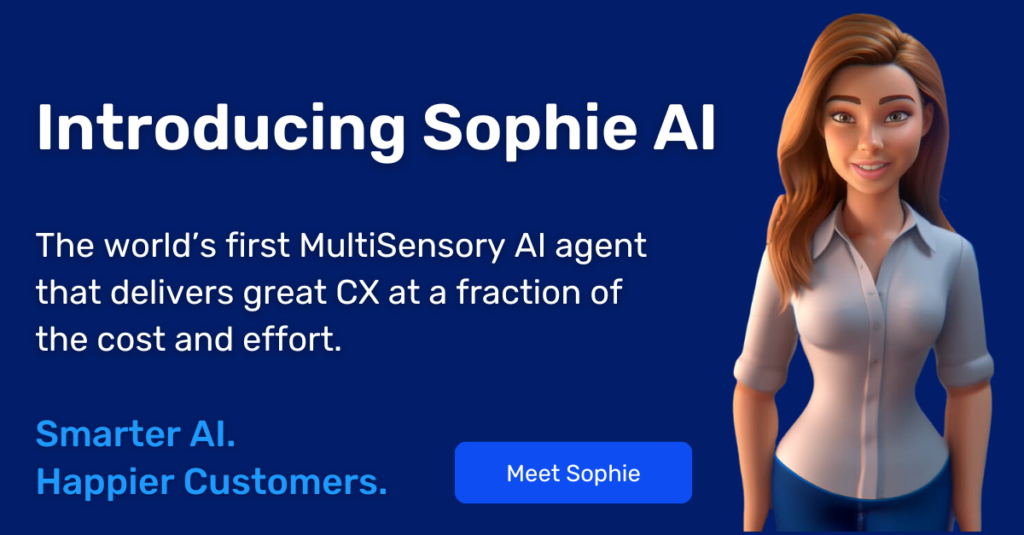Contents
- What is Gig Customer Service?
- Gig customer service: Can it really work?
- Gig Pain Point #1: Keep the customer interaction within the GigCX platform
- Gig Pain Point #2: Find efficient ways to match freelancers with customers
- Gig Pain Point #3: Guarantee quality of freelancer’s work
- Brand Pain Point #4: Fear of losing control over the customer journey
- Brand Pain Point #5: Missed opportunities to drive revenue via upsells
- Brand Pain Point #6: Risk to brand reputation and trust
- Real Potential for Growth in Gig Customer Service with Visual Assistance
The gig economy is exploding, spawned by well-known apps such as Fiverr, TaskRabbit, Thumbtack, and Upwork that serve as digital marketplaces where an independent worker can be hired for a short-term project or task on-demand, also known as a gig.
What is Gig Customer Service?
This gig-based economic format has spread to the customer service function – known as GigCX – where freelance customer support agents are sourced to perform on a per-task basis. Brands and retailers leverage gig customer service workers to ensure high-quality customer experiences while only staffing and paying for the actual work needed. This format also gives businesses the flexibility to take on additional GigCX agents when necessary, allowing organizations to ensure top-quality service during high-volume periods. Gartner estimates that by 2022, there will be a 50% increase in one-off issue resolution and consultative services offered on freelance platforms, and Everest Group estimated that U.S. gigs will surpass the permanent workforce by 2027, growing 40% by 2027 to reach 86 million.
But there are still significant hurdles that must be overcome in order to reach these massive numbers. The gig platform must ensure the freelancer-customer interaction is kept within the platform, that freelancers are well matched with customers, and that their work is of high quality. Brands must ensure that they retain control of the customer journey, grasp opportunities for revenue generation, and uphold their reputation.
Gig customer service: Can it really work?
Let’s explore how visual assistance addresses the pain points of the gig platform.
Gig Pain Point #1: Keep the customer interaction within the GigCX platform
Solution: Embedded visual engagement platform
Platforms recognize the need to retain control of customer communications by keeping the back-and-forth within their own apps. When communication occurs off-platform, there is a risk of leakage. This is a situation where the initial contact between customer and freelancer occurs via the platform but then an ongoing transactional relationship is formed outside of the platform, cutting out the platform as a “middleman.” TaskRabbit addresses this risk by charging a greater fee for the first transaction than for subsequent tasks, while Thumbtack charges for the lead rather than for the job.
Embedding a visual engagement platform within the app not only eliminates the risk of leakage that occurs when contractors skype or zoom with customers, but it offers the benefits of data. All images or videos taken by customers or freelancers are stored within the platform, making the data available for future reference, QA auditing, and AI-based scheduling of jobs in the future. For example, if a freelance HVAC technician takes before-and-after images of a successful boiler replacement, those images can be leveraged for training purposes or for future AI-based job verification.
Gig Pain Point #2: Find efficient ways to match freelancers with customers
Solution: Intelligent scheduling
With 52% of companies still using manual methods for most of their service-related tasks, such as scheduling and work planning, companies need better tools for success. Human error – double booking, mismatching skills, etc. – is inevitable. Job scheduling is even more complicated when it comes to freelancers or outsourced technicians. Efficiency improvements have become a priority, and many companies are finding success by harnessing the power of AI to automatically assign jobs to the right freelancer based on past history, skills, location, priority, tools, and availability.
Job assignments can become even more efficient with the addition of Computer Vision AI technology. Companies can leverage images collected from these visual interactions – such as remote visual sessions, recordings from the site, interactions with the bot, etc. – to identify which freelancers have experience with specific issues. The intelligent scheduling system can then even more accurately assign freelancers for jobs they are familiar with, raising the likelihood of customer satisfaction. For example, a restaurant sends a commercial refrigeration company a photo of an error message being received on one of its freezers. Computer Vision recognizes the make and model of the freezer, the error message, and a number of possible fixes. It then searches for past history of the outsourced technicians who have uploaded images of resolved errors on this particular machine. The refrigeration company promptly dispatches the right technician with the right knowledge and parts to the restaurant, ensuring the problem is resolved right away.
Gig Pain Point #3: Guarantee quality of freelancer’s work
Solution: Visual job recording and analysis
Quality assurance is a critical part of any Gig platform’s workflow. It ensures that any potential errors or sub-quality work performed by contractors are identified and fixed proactively before it costs the organization big in terms of dollars and reputation. Oftentimes the gig customer service worker’s tasks must be supervised by a manager or expert, a resource-heavy process that is slow and inefficient.
Confirmation of work quality can be taken to the next level with visual job recording and analysis. A freelancer can be automatically guided through the process of capturing a series of images that verifies all correct steps have been taken, ensuring that the gig worker is providing the levels of service expected by the business. These images can be leveraged for future training or remediation purposes, as well as for analyzing common problems with company products. In some cases, visual assistance may be able to detect fraudulent activity on the part of the gig customer service worker, for example, by determining that the uploaded images are not originals.
However, the pain points don’t end with the gig platform. Brands have their own concerns:
Brand Pain Point #4: Fear of losing control over the customer journey
Solution: Visual auto-verification
All companies who engage with the GigCX economy face the risk of underwhelming, or worse, upsetting their customers, thereby disrupting the customer journey. When freelancers do not have full access to company materials, the brand runs the risk of them giving over erroneous information.
Offering visual auto-verification is a win-win situation for both freelancers and brands. Freelancers benefit from having a greater degree of engagement with the brand’s resources. For example, rather than having to search through an inventory database or call in and wait for a response, the contractor can simply upload a photo of the job, and the visual assistance platform will auto-recognize the needed part and check for available inventory. The technology can also be used for job verification. For example, a telecom technician can open a visual assistance session, upload images of a completed grid, and receive automated verification that the job was completed successfully. This self-service provides added value to gig customer service workers who don’t have to wait in a queue for a supervisor’s approval.
Brand Pain Point #5: Missed opportunities to drive revenue via upsells
Solution: Boost product registration
Companies who dispatch service technicians to a customer’s home have a unique advantage. Those technicians are well placed to leverage the visit to present the customer with possible upsells, such as an extended warranty, product-add-ons, or even upgrades. When GigCX workers or outsourced technicians come on site, they don’t have the same level of motivation or incentive to promote the brand’s interests.
One way brands can resolve this issue is through improving their product registration process – the way they capture new customers’ information at the time of sale. Product registrations enable brands to connect directly with consumers and engage with them throughout the duration of their product ownership. Regardless of whether the customer interacted with an employee or a GigCX worker, brands can communicate with their customers regarding product support, updates, safety recalls, and recommendations for additional products – as well as activate warranties – providing their customers with added value beyond the point of sale.
Visual assistance can be utilized to allow self-service registration thanks to advances in computer vision AI. For example, a customer who buys a new coffee machine may not realize that the manufacturer’s real source of profit comes after the initial sale: from the recurring revenue of the coffee pods. Using visual assistance, the customer can point his smartphone at the barcode or serial number and the receipt and auto-register the machine in minutes. Now the company can engage the customer in the future for upsells like subscription coffee service, accessories, product warranties, or other promotions.
Companies can also benefit when technicians use visual assistance for job verification. Once the technician confirms that the job was completed successfully — either assisted or unassisted — the technician can be prompted to offer the customer relevant promotions, upsells or upgrades.
Brand Pain Point #6: Risk to brand reputation and trust
Solution: Greater control over brand reputation
Gartner estimates that by 2022, 90% of customers will seek issue resolution from individuals outside of the company, mainly using generic how-to user guides created by freelancers. This puts the organization at risk as they have no control over the quality or content of these videos. In addition, customers diverting to external sites means loss of site traffic and potential upsells.
Visual assistance is more effective than standard how-to videos. A visual assistance platform can allow freelancers and customers to engage and interact. It can allow customization and personalization based on the physical environment. For example, a GigCX consultant for a window treatment company can see the customer’s home and suggest curtains based on the décor of the room. The consultant can guide the customer through the measurement process and even correct the customer if they measure a corner incorrectly. Offering this level of visual engagement results in higher containment rates both for assisted service and self-service channels.
Real Potential for Growth in Gig Customer Service with Visual Assistance
With companies increasingly recognizing the importance of adopting an agile customer service strategy for real-time support, GigCX is poised for tremendous growth — as soon as specific pain points for the gig platform and brands are addressed. Visual assistance powered by Computer Vision AI can facilitate this growth by offering an integrated visual solution within the platform that includes intelligent scheduling, Visual job recording and analysis, Visual auto-verification, simple product registrations, and a way to retain greater control over brand reputation.
Visual assistance is more than just a tool to help you ‘see what your customer sees’ – it’s a centerpiece of the digital transformation and an enabler of GigCX. Visual assistance powered by Computer Vision AI can identify the equipment or device in question and offer GigCX workers instant access to a trained AI system without holding in a phone queue or waiting for brand confirmation. The technology can also search for similar images from the knowledge base, identify the resolution and retrieve it quickly for the freelancer, providing the correct steps to fix the problem. The freelancer can then upload an image of the completed job, allowing the system to compare it with the ideal image to verify that the job was done correctly and add the tagged image to its repository.
Visual assistance transforms a self-service channel like web, chat, or online video tutorials into a visual, interactive, and personalized experience, allowing freelancers to resolve issues by themselves without the need to contact the brand’s support center.







